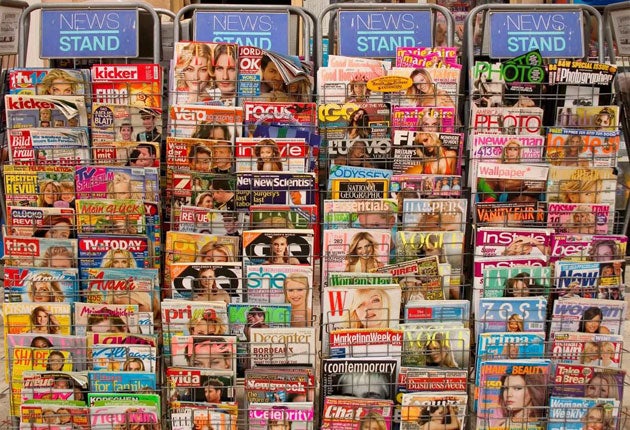It is just the text or texture that counts?
A new threat to print journalism, or is Asda's digital online magazine deal a publishing lifeline? Amol Rajan reports

Almost every week further evidence is brought forward of the inevitable decline of print media. Opponents of the doom-mongers stubbornly resist, claiming that the appeal of newsprint lies partly in the beauty of the physical product, its texture and its portability.
Yet do we really need to carry our favourite mag around with us at all? Asda suspects not, having adopted the idea of a digital newsagent, which might be among the gravest threats to print media yet.
Modelled in part on the already successful website digitalnewsagent.com, the high street retailer is pioneering a system whereby consumers pay a fixed monthly subscription for a magazine which is then downloaded on to their PC. Unlike a website, which has a loading front page that directs users to different links, this scheme aims to recreate digitally the shape of a magazine, with pages arranged in sequence to induce a "click and flick user interface".
This "click and flick" technique is already used on the website of Metro, the London freesheet owned by Associated Newspapers. It gives users a clearer sense of the editorial layout of the publication than a website, in which the scale and prominence of particular stories can be lost.
Flexibility is trumpeted as another advantage of the digital newsagent over its corner shop rival. Regular readers of a particular publication can choose to buy a month's subscription to their favoured title but for a generation that has grown up with the luxury of free content from a plethora of different providers, there is an opt-out from that rigidity.
Brand loyalty is thought by many marketing men to be a dwindling asset in Britain, especially among the young. The digital newsagent attempts to tap into this idiosyncrasy by allowing consumers to flick and flutter between publications. So for, say, £8.99 a month, a subscriber could buy one issue of Marie Claire and also one of Heat, OK!, and Hello! – rather than four editions of the same publication.
Two questions arise about the efficacy of such an idea, which is being implemented in partnership with media group John Menzies Digital Ltd. First, will people genuinely prefer the convenience of online subscription to the physical activity – some would say pleasure – of walking into a local shop, browsing shelves, and buying a publication over the counter?
Second, why would avid fans of a particular publication, or a variety of publications, not just prefer to browse through the websites of these publications?
On the latter point, Tony Prescott, director of new business development at Asda, says: "Many of the magazines we're offering, from FHM and Nuts to OK! don't offer all of their content online. Unlike the websites, our digital store will have access to the full content in the magazines."
On the former issue, about the appeal of the printed page (glossy or not), Prescott says that the convenience of the consumer trumps all.
"There is a growing number of people in our society who carry an online device, such as a laptop, with them. And these devices are getting smaller and more convenient. At the same time, there are a lot of people who don't have the time or the patience to go to the shop. Buying a magazine online will soon prove far more convenient, and become a habit."
The technology also has green credentials, Prescott claims, because it minimises paper wastage. And this could, he argues, be grounds for negotiating cheaper prices from magazine editors.
"If you think that we're totally eradicating the printing and distribution costs for these publications, as well as opening them up to a whole new market, I think in time we could argue that we ought to be able to offer a cheaper product than our rivals in normal newsagents. There are potentially enormous cost-savings to be made there."
Asda sells more than 1.3 million magazines every week. Dan Balding, the chain's managing director, said he was keen to be the first to promote the digital newsagent idea because "consumers are telling us they want content on screen rather than in print".
But whether magazine editors see digital newsagents as an opportunity rather than a threat will not be clear for some time yet. For Asda, at least, it seems a worthwhile experiment. The company has committed to backing the project for a year, and has offered a free online magazine to all visitors to the website by way of introduction.
It's not the only reason Prescott, who has managed the project from its conception, is upbeat. "I've been at Asda for 18 months now," he says. "I was at Woolworths before then and now look what's happened to them."
Join our commenting forum
Join thought-provoking conversations, follow other Independent readers and see their replies
0Comments